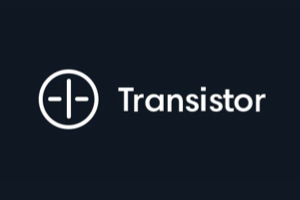Certified - CompTIA Network + – Details, episodes & analysis
Podcast details
Technical and general information from the podcast's RSS feed.

Certified - CompTIA Network +
Jason Edwards
Frequency: 1 episode/0d. Total Eps: 184

Recent rankings
Latest chart positions across Apple Podcasts and Spotify rankings.
Apple Podcasts
🇨🇦 Canada - courses
07/08/2025#100🇺🇸 USA - courses
07/08/2025#94🇨🇦 Canada - courses
06/08/2025#78🇺🇸 USA - courses
06/08/2025#82🇨🇦 Canada - courses
05/08/2025#45🇺🇸 USA - courses
05/08/2025#64🇬🇧 Great Britain - courses
26/07/2025#90🇬🇧 Great Britain - courses
25/07/2025#71🇬🇧 Great Britain - courses
24/07/2025#38
Spotify
No recent rankings available
Shared links between episodes and podcasts
Links found in episode descriptions and other podcasts that share them.
See allRSS feed quality and score
Technical evaluation of the podcast's RSS feed quality and structure.
See allScore global : 69%
Publication history
Monthly episode publishing history over the past years.
Episode 1: Welcome to the Network Plus PrepCast
Episode 1
dimanche 20 juillet 2025 • Duration 12:25
This opening episode introduces you to the Network Plus PrepCast and lays the foundation for what to expect as you prepare for the CompTIA Network Plus exam. We explain the structure of the series, who the PrepCast is for, and how this audio-first format helps you learn networking on the go. Whether you’re driving, walking, or studying at your desk, this series is designed to guide you through each exam objective with clarity and precision.
You’ll also learn about the value of the Network Plus certification, its role in the IT industry, and how this podcast will help you master both the theoretical knowledge and practical skills needed to pass the exam and launch your networking career. This is your roadmap to success, and it starts here.
Episode 2: What Is the Network Plus Certification and Why Take It?
Episode 2
dimanche 20 juillet 2025 • Duration 12:51
In this episode, we explore what the Network Plus certification is, who it’s intended for, and why it holds value in the IT world. We look at how it fits into career paths, its relationship to other CompTIA certifications, and the kinds of roles and responsibilities it validates for entry-level professionals.
Whether you're just starting in IT or looking to level up your resume, this certification proves your knowledge of networking fundamentals, infrastructure, troubleshooting, and security. You'll understand why it's worth your time and effort—and how it can be the first step in a much larger journey.
Episode 11: Data Types — Analog, Digital, and Signal Characteristics
Episode 11
dimanche 20 juillet 2025 • Duration 12:31
This episode explores the fundamental types of data transmission—analog and digital—and how they relate to signal behavior on modern networks. You'll learn the differences between continuous analog waveforms and discrete digital signals, including how they are interpreted by networking equipment. These distinctions are vital for understanding how data travels through copper, fiber, and wireless media.
We also cover key signal characteristics like amplitude, frequency, phase, and wavelength. These factors influence everything from bandwidth to error rates, especially in environments prone to interference. If you've ever wondered what determines the quality and clarity of network signals, this episode lays the groundwork with easy-to-understand explanations.
Episode 101: Dynamic Routing Protocols — Distance Vector and RIP
Episode 101
dimanche 20 juillet 2025 • Duration 15:25
Dynamic routing protocols automate the process of finding and maintaining routes between networks, and this episode introduces one of the earliest and most basic forms: distance vector routing. You’ll learn how distance vector protocols like RIP (Routing Information Protocol) use hop count to determine the best path and how they periodically exchange full routing tables with neighboring routers. We discuss how distance vector protocols are simple to implement but come with scalability and convergence limitations.
We also cover key concepts like split horizon, route poisoning, and hold-down timers, which help prevent routing loops and maintain stable networks. While RIP may be considered outdated for large-scale deployments, it is still foundational to understanding how routing works. This episode prepares you for more advanced dynamic protocols and ensures you can interpret RIP behavior and configuration on both the exam and in lab environments.
Episode 102: Link-State and Hybrid Routing Protocols — OSPF, EIGRP, and BGP
Episode 102
dimanche 20 juillet 2025 • Duration 14:46
As networks grow in size and complexity, distance vector routing protocols become inefficient. This episode introduces link-state and hybrid routing protocols—more sophisticated tools for modern routing. We begin with OSPF, a link-state protocol that uses a cost metric and maintains a full map of the network. You'll learn how areas and LSAs (Link-State Advertisements) work, how OSPF selects the shortest path using Dijkstra’s algorithm, and how it quickly converges after changes.
We then explore EIGRP, Cisco’s hybrid protocol that combines features of both distance vector and link-state models, offering fast convergence and granular control. Finally, we introduce BGP, the backbone of internet routing, and explain how it uses path vector logic to manage routes between autonomous systems. Understanding these protocols is critical for the exam and essential for working in any medium-to-large network environment.
Episode 103: Routing Scope — Interior vs. Exterior Routing
Episode 103
dimanche 20 juillet 2025 • Duration 14:57
Not all routing protocols are created for the same environment. This episode explains the difference between Interior Gateway Protocols (IGPs) and Exterior Gateway Protocols (EGPs). IGPs like RIP, OSPF, and EIGRP are designed to operate within a single administrative domain or autonomous system, focusing on fast convergence and ease of configuration. In contrast, EGPs such as BGP handle routing between autonomous systems across the public internet and prioritize stability and policy control over speed.
We also discuss the administrative and policy implications of using EGPs, such as filtering, route aggregation, and peering agreements. You’ll learn how networks choose which type of protocol to use depending on their role and size, and how scope influences scalability and control. Understanding routing scope helps you design the right solution for enterprise and ISP-grade networks alike.
Episode 104: Bandwidth Management — Shaping and Prioritizing Traffic
Episode 104
dimanche 20 juillet 2025 • Duration 14:27
When network demand exceeds available bandwidth, performance suffers—unless you implement effective traffic management. In this episode, we explore bandwidth shaping, queuing, and prioritization techniques that allow administrators to control how data moves through the network. You'll learn about traffic classification, QoS (Quality of Service), and how to assign priority to real-time traffic like VoIP and video conferencing.
We also dive into policing, traffic marking (like DSCP and CoS), and methods for dropping or delaying packets under congestion. These techniques are especially useful in WAN links, cloud connections, and wireless networks. Whether you're preparing for the exam or optimizing a production environment, understanding bandwidth management gives you control over network performance under load.
Episode 105: VLANs — Segmenting the Network with Data and Voice
Episode 105
dimanche 20 juillet 2025 • Duration 14:07
Virtual LANs (VLANs) are essential tools for logically segmenting a network, improving security, performance, and organization. In this episode, we explore how VLANs work by assigning different ports to different broadcast domains—even if those ports are on the same switch. You'll learn how VLANs separate voice and data traffic, simplify policy application, and reduce the spread of broadcast traffic. We also introduce best practices for numbering, naming, and documenting VLANs.
We discuss how VLANs are used in real environments to segment departments, devices, or traffic types. You'll see how VLAN design supports scalability and control, particularly when combined with trunking and routing. This foundational knowledge is critical for passing the exam and for understanding how to implement structured, secure networks.
Episode 106: Port Tagging and 802.1Q — Trunks and VLAN IDs
Episode 106
dimanche 20 juillet 2025 • Duration 14:31
VLANs are powerful, but they require the right tagging protocol to work across multiple switches—and that’s where 802.1Q comes in. This episode explains how trunk ports carry traffic from multiple VLANs using VLAN tags inserted into Ethernet frames. You’ll learn how access ports differ from trunk ports, and why configuring native VLANs is important to avoid untagged traffic conflicts and security issues.
We also discuss Dynamic Trunking Protocol (DTP), the risks it poses, and why disabling unnecessary trunk negotiation is a best practice. Understanding tagging and trunking is essential when deploying multi-switch VLANs and connecting infrastructure like VoIP phones, which often require multiple VLANs on a single port. This topic regularly appears in both configuration labs and troubleshooting scenarios on the exam.
Episode 107: Port Aggregation with LACP
Episode 107
dimanche 20 juillet 2025 • Duration 13:59
When a single link isn’t enough to handle bandwidth demands or redundancy requirements, port aggregation offers a scalable solution. In this episode, we explain how LACP (Link Aggregation Control Protocol) is used to combine multiple physical interfaces into one logical link known as a port channel or EtherChannel. You’ll learn how LACP negotiates aggregation, prevents loops, and distributes traffic across links based on load-balancing algorithms.
We cover the difference between static and dynamic link aggregation, how to configure active and passive LACP modes, and how to monitor the health of your aggregated links. Port aggregation is commonly used between core switches, servers, and storage systems to boost throughput and ensure fault tolerance. This is a must-know feature for high-performance and redundant network design.